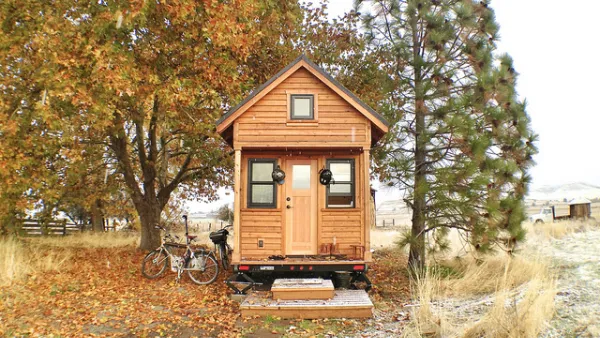Building sizes have been creeping upward for centuries, but green building expert Jason McLennan argues that smaller structures are better, more beautiful, and ecologically inevitable.
Throughout history, empires have been scaling up their building sizes in order to reflect their power. In modern times, we build oversize buildings to match our oversize corporations, "mega-metropolises," and economies.
But Jason McLennan argues that this can't go on forever. "There is a point where individual accountability, familiarity, and sense of place disappear. And we have reached it," he writes. "We have lost the ability to relate to and understand our food systems, economic systems, energy and transportation systems, and ultimately the environment itself."
McLennan believes that we'll necessarily return to a sustainable scale of building and living within the next 20 years. He predicts that our skyscrapers will shrink, we'll start to live more locally, and start learning to know the land and communities again. "The only oversized movement we need is the one that takes us closer to small, localized solutions."
There's no single right size for buildings or communities, he says, but the key is to find the "sweet spot" for any initiative and he includes a number of tests of scale for identifying it.
FULL STORY: In the Built Environment, the Tyranny of the Big, the Beauty of the Small

National Parks Layoffs Will Cause Communities to Lose Billions
Thousands of essential park workers were laid off this week, just before the busy spring break season.

Retro-silient?: America’s First “Eco-burb,” The Woodlands Turns 50
A master-planned community north of Houston offers lessons on green infrastructure and resilient design, but falls short of its founder’s lofty affordability and walkability goals.

Delivering for America Plan Will Downgrade Mail Service in at Least 49.5 Percent of Zip Codes
Republican and Democrat lawmakers criticize the plan for its disproportionate negative impact on rural communities.

Test News Post 1
This is a summary

Test News Headline 46
Test for the image on the front page.

Balancing Bombs and Butterflies: How the National Guard Protects a Rare Species
The National Guard at Fort Indiantown Gap uses GIS technology and land management strategies to balance military training with conservation efforts, ensuring the survival of the rare eastern regal fritillary butterfly.
Urban Design for Planners 1: Software Tools
This six-course series explores essential urban design concepts using open source software and equips planners with the tools they need to participate fully in the urban design process.
Planning for Universal Design
Learn the tools for implementing Universal Design in planning regulations.
EMC Planning Group, Inc.
Planetizen
Planetizen
Mpact (formerly Rail~Volution)
Great Falls Development Authority, Inc.
HUDs Office of Policy Development and Research
NYU Wagner Graduate School of Public Service



























